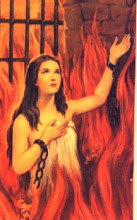Polka originates in the former state of Bohemia in central Europe. Most of it is now the Czech Republic. For most of its history, polka did not have a name; rather it was just a bunch of peasant dances that were native to the region. The name polka is supposed to come from the Czech word for Polish Girl. The choice of this term is little understood and few know why they chose this name for a Czech dance.
Polka and dancing are linked at the hip. It is not so much a music style as it is a vehicle for dance. It reached its peak of popularity in the middle of the 19th century when it began to sweep European dance halls. Immigrants soon brought the polka to America, were it became extremely popular, even among non-immigrants. Polka also exists in German and Polish forms. It proliferates in communities that abound in German polish and Czech immigrants. These areas include vast swaths of the Midwest and Texas. In Texas, polka rhythms and instrumentation were blended with Spanish music to create a new form of music often called Tejano music.
Polka rhythm is in half time (2/4) and is often syncopated. Traditional instruments include bagpipes, bases, violins, violas and the ubiquitous accordion. The accordion is the instrument most closely linked to polka in America.
Thursday, March 4, 2010
Subscribe to:
Post Comments (Atom)

No comments:
Post a Comment